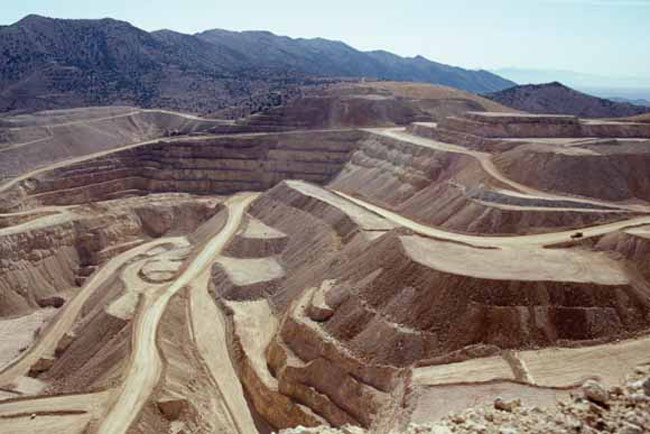3D Models Mine Maps for Hidden Gold

Gold and other valuable metals hidden within mountain ranges can now be discovered through 3D computer models, says an Israeli researcher who developed the software for them.
Mountain ranges are notoriously difficult environments in which to hunt valuable minerals, but the new approach already has revealed a deposit of more than 500,000 tons of metals on the southern slope of the Caucasus between the Black and Caspian seas. The reserve includes copper, zinc, lead, aluminum, and a mixture of gold and silver, investigators say.
The 3D models are based on data gathered from other methods already used to hunt for such underground resources as metals, oil, gas or water, researcher Lev Eppelbaum, a geophysicist at Tel Aviv University in Israel, explained. There are a number of ways to detect the presence of metals ?for instance, measuring how magnetic fields vary over the Earth's surface.
Scientists also can look for gravitational variations. The strength of Earth's gravitational field on any point of the planet's surface varies on the density of the underlying matter, and the density of polymetallic ore, which consists of more than one metal, exceeds that of the surrounding rocks. Satellites can provide a measure of how the Earth's gravitational field varies over its surface by the changes in their orbits as they pass overhead.
However, when it comes to mountain ranges, the mapping of magnetic and gravitational fields can easily get thrown off by changes in the altitude of the landscape, surrounding temperature, and air pressure, Eppelbaum said.
To analyze such complex, rough terrain, Eppelbaum and colleague Boris Khesin of Ben Gurion University in Israel developed new mathematical approaches to process the information gathered from already existing methods. Their specially designed software then allows researchers tointerpret all this data in a cohesive 3D model.
"This 3D combined modeling software, which we programmed ourselves, enables scientists to see the buried targets more clearly," Eppelbaum said.
Get the world’s most fascinating discoveries delivered straight to your inbox.
The system essentially focuses on eliminating different types of "noise" from multiple sources of data to get a clearer picture of anomalies underground.
"This interpreting system has been specially developed for complex geological environments," Eppelbaum told InnovationNewsDaily.
In addition to the Caucasus, Eppelbaum said, the software could be applied to mountainous regions such as the Appalachian Mountains in the United States and Canada or the Alps in Europe. He now plans to collaborate with geophysicists worldwide to discover new mineral reserves around the world. [Shortage of Rare Metals Could Threaten High-Tech Innovation]
"These reserves are very valuable resources for countries to discover," Eppelbaum said.
Gaps in geophysical data remain a major hurdle for researchers, however. For instance, when it comes to the Caucasus, some valuable information is not available, such as on uranium deposits of the northern Caucasus. "The last data on oil and gas developments in the Caucasian region are also unacceptable," Eppelbaum said.
The findings by Eppelbaum and Khesin, who died in 2010, were detailed at the European Geosciences Conference in Vienna in April and in their book "Geophysical Studies in the Caucasus."
This story was provided by InnovationNewsDaily, a sister site to LiveScience. Follow InnovationNewsDaily on Twitter @News_Innovation, or on Facebook.



